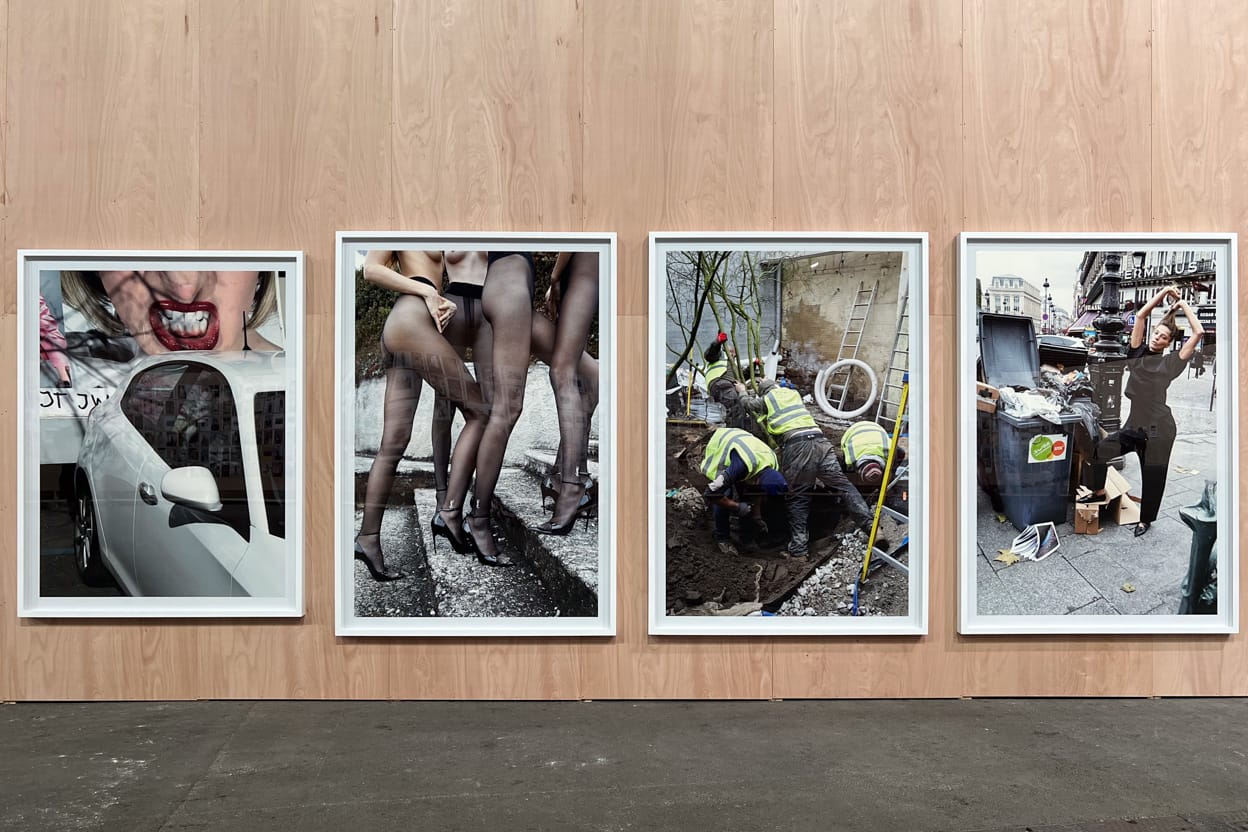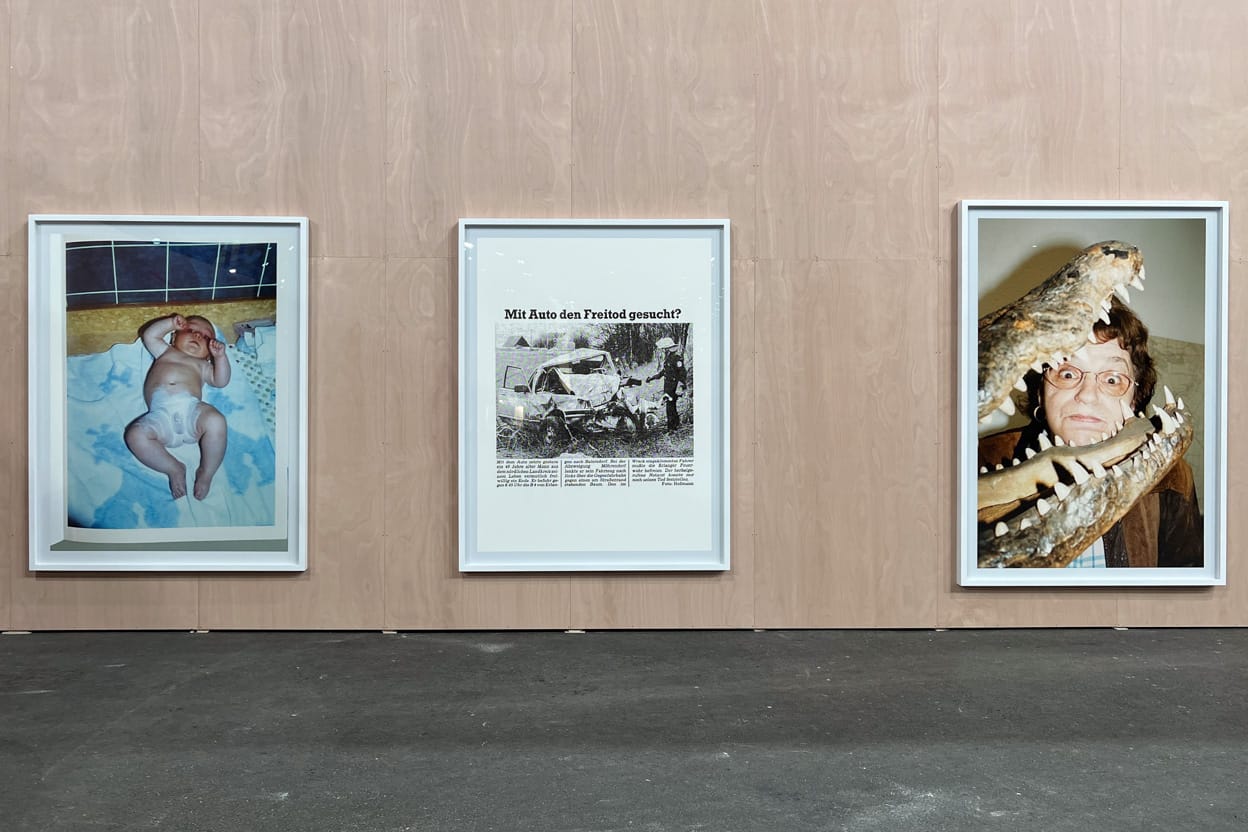
Juergen Teller is in many ways my opposite. That’s why I find his work interesting and inspiring. As the art critic Jerry Saltz writes in his book How to Be an Artist, the first lesson, before you even get started making things, is not to be embarrassed. When you’re making art "you often reveal things about yourself that others may find appalling, weird, boring, or stupid." You should not be ashamed to nonetheless pursue your vision and share it with the world. I admit that this is something I still struggle with. In his masterclass Jeff Koons says something similar, when he explains that one of the most important things in being an artist is to have full confidence in what you do and to share that confidence with the audience.
"i need to live" is the largest retrospective ever devoted to Juergen Teller and showcases his entire body of work, from his fashion editorials and celebrity portraits to family snapshots and personal projects. The photographs look a little bit lost in the vast space of the Grand Palais Éphémère. They would have benefited from a more intimate space and from being laid out across multiple rooms, as in the Maison Européenne de la Photographie. The exhibition’s designers have installed wooden panels to exhibit the photographs and to create some sort of trajectory. Some photographs are framed, others are pinned to the wall, which matches Teller’s aesthetic, some are blown up, others are the size of a postcard.

The exhibition opens with a photo of Teller as a baby, an enlargement of a newspaper article about a car crash, an apparent suicide, and a hilarious portrait of his mother. The car’s driver was in fact Juergen Teller’s father. The next photo shows Teller at his father’s grave, nude and with a cigarette in one hand and a beer bottle in the other. This might seem disrespectful, until you learn more about Teller’s relationship with his father, who abandoned his family when Teller was a child and who would eventually commit suicide. The photograph is Teller’s way of coming to terms with his father’s life and death.
Towards the end of the exhibition there is a photograph and a video of Teller lying naked on his back on a grand piano, - with Charlotte Rampling playing the piano -, his legs in the air and his bottom facing the audience. It is, perhaps, not the most aesthetic pose and to be honest not my favorite photograph in the exhibition. The photograph actually relates back to the first photograph in the exhibition of Juergen Teller as a baby. For why do people think that it is sweet when they see a photo of a naked baby and why are they revolted when they see an adult person in the same pose?
Much of Teller’s work deals with notions of beauty and ugliness. Beauty works as a magnet. It attracts and holds attention. Ugly is not the counterpart or the negation of beauty. It can be thought of as an excess, something that is experienced as being there, yet should not be there and which as such threatens the subject (*). Dirt is not dirty in itself, it is matter in the wrong place. Confronted with the ugly we want to look away. And yet the ugly also exerts a strange fascination.
Juergen Teller is fascinated by subjects that many people would consider ugly: trash, dirt, frogs, roadwork, derelict spaces and so on, and he likes to photograph people, including himself, in poses that might be considered unaesthetic, but that, as a consequence, I myself actually find interesting.
Juergen Teller’s work also reminds me of the Japanese aesthetics of imperfection. As the Buddhist monk Yoshida Kenko (c. 1283 - 1350) famously wrote: "Are we to look at cherry blossoms only in full bloom, the moon only when it is cloudless? To long for the moon while looking on the rain, to lower the blinds and be unaware of the passing of the spring - these are even more deeply moving. Branches about to blossom or gardens strewn with faded flowers are worthier of our admiration."
I am aware that when writing about something you inevitably end up intellectualizing it, whereas Juergen Teller is just taking photos. Let me therefore finish by saying that Juergen Teller also has a great sense of humor and that his photos can be quite funny if not outright hilarious.
The exhibition is accompanied by a book of the same title that you can buy from your favorite bookstore if you can’t make it to the exhibition.
Juergen Teller. i need to live is at the Grand Palais Éphémère in Paris until 9 January 2024.
(*) I had the privilege of attending Mark Cousins legendary lecture series about The Ugly at the AA School of Architecture in London, which had a lasting impact on my thinking. The lectures were published in the AA Files 28, 29 and 30 and have since also been published in book form, Mark Cousins: The Ugly I, II, III. ARQ Ediciones 2020.
Links
Peter Lindbergh. A Different Vision On Fashion Photography.
Irving Penn at the Grand Palais.
Anton Corbijn at the Gemeentemuseum and the Fotomuseum Den Haag.